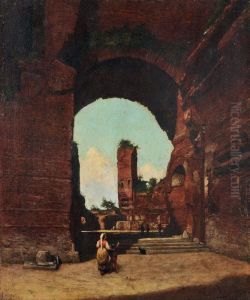Luigi Folli Paintings
Luigi Folli was an Italian painter who lived and worked during the Baroque period. Although the exact date of his birth is not known, he is believed to have been born around 1624 in Milan, which was then part of the Spanish Empire. He is sometimes referred to as 'Luigi di Milano.' Folli showed an aptitude for painting at a young age and was trained in the Lombard painting tradition, which was known for its naturalism and attention to detail.
Folli's work was influenced by the great masters of the time, such as Caravaggio, whose style had a profound impact on Baroque painters. Caravaggio’s dramatic use of light and shadow, known as chiaroscuro, as well as his realistic depiction of human figures, can be seen in Folli's paintings. Folli was also influenced by the work of other Northern Italian painters and was known for his religious works, portraits, and still lifes, which were imbued with a sense of realism and attention to detail.
Throughout his career, Folli received numerous commissions from churches and patrons in Milan and the surrounding regions. His paintings often featured biblical and mythological subjects, rendered with a strong sense of drama. Despite his accomplishments, Folli did not gain the same level of fame as some of his contemporaries. As a result, there is less documentation on the full scope of his life and work compared to more renowned artists of the time.
Luigi Folli died in 1686 in Milan. Although he may not be as widely recognized today as other Baroque artists, his work still stands as a testament to the rich artistic culture of 17th-century Italy. His paintings are characterized by their vibrant colors, skilled composition, and the emotional depth of the figures depicted. Some of Folli’s works have been preserved and can be found in art collections and museums, offering insights into the era's Lombard painting style and the broader Baroque movement.
